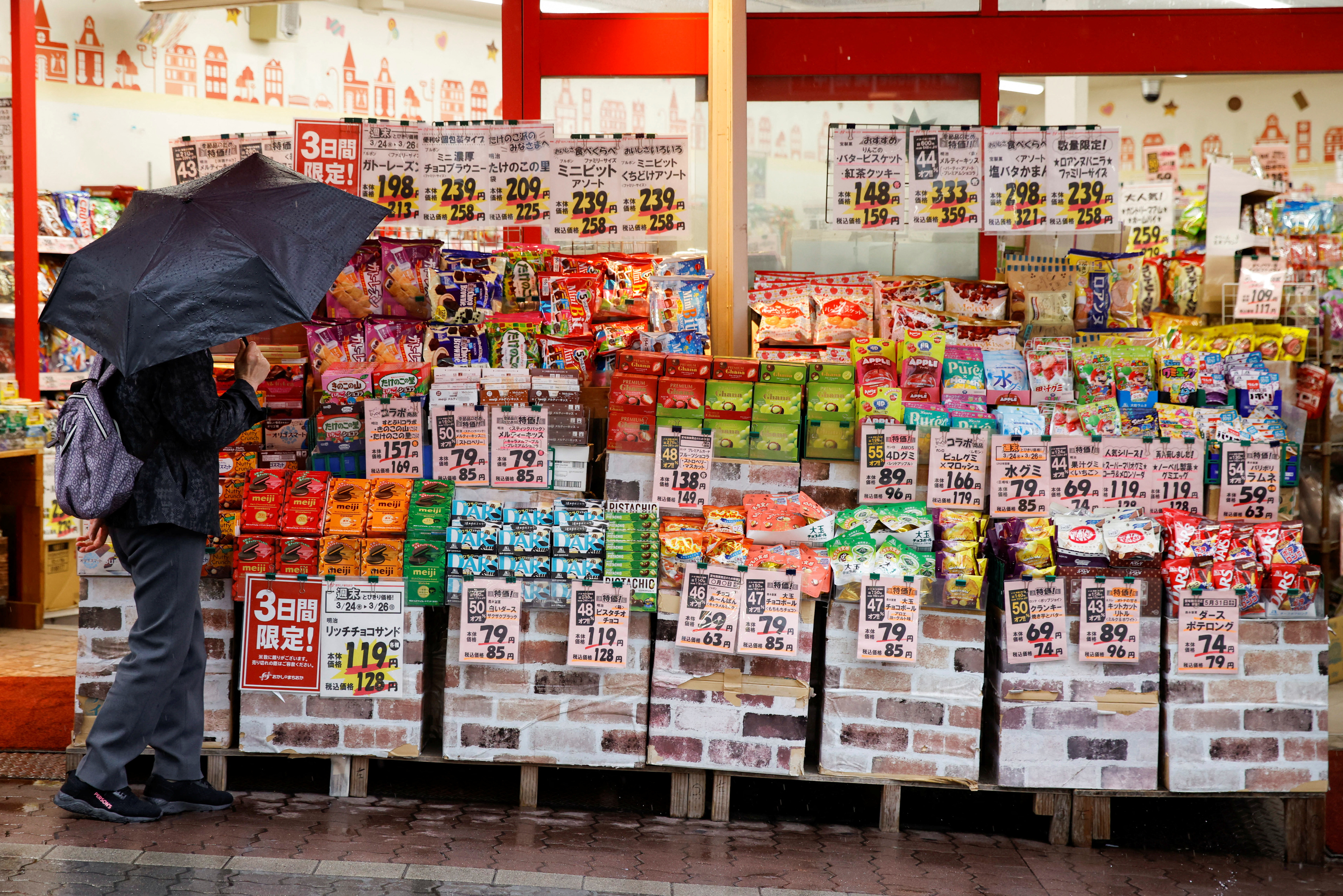
A woman looks at products at a store in Tokyo, Japan on March 24, 2023. REUTERS/Androniki Christodoulou/File Photo Get license rights
TOKYO, Nov 13 (Reuters) – Japanese headline inflation fell below 1% in October for the first time in 2-1/2 years, data showed on Monday as a broad range of commodities began to fade.
The slowdown in commodity-based inflation is in line with the Bank of Japan’s forecasts, and analysts say attention is focused on whether wages and housing costs will rise enough to generate a demand-driven rise in consumer prices.
“Wholesale inflation appears to have cooled as past declines in raw material and energy costs filtered through domestic business-to-business prices,” said Takeshi Minami, chief economist at Norinchukin Research Institute.
He said the effect of government subsidies to curb petrol and utility charges would lead to a reduction in consumer inflation by the end of the fiscal year ending March 2024.
“But the pace of consumer inflation will moderate as labor shortages and higher wages support service prices,” he said.
The corporate goods price index (CGPI), the price companies charge each other for their goods and services, rose 0.8% in October, matching the average market forecast for a 0.9% gain but cooling significantly from 2.2. % rise in September.
This marks the 10th straight month in which headline inflation has slowed, with the year-on-year growth rate falling below 1% for the first time since February 2021, the data showed.
The slowdown was due to a decline in the prices of timber, chemicals and steel products, highlighting the impact of the global commodity price slump.
The rise in headline inflation prompted many Japanese firms to pass more costs home, leading the BOJ to upgrade its inflation forecasts in its quarterly projections released in October.
The BOJ said such cost-plus inflation would dissipate and must be replaced by price increases driven further by strong domestic demand to end ultra-low interest rates.
BOJ Governor Kazuo Ueda said Japan was making steady progress toward meeting the bank’s 2% target, as conditions for an exit from ultra-easy policy gradually eased.
Reporting by Laika Gihara Editing by Sri Navaratnam and Sam Holmes
Our Standards: Thomson Reuters Trust Principles.